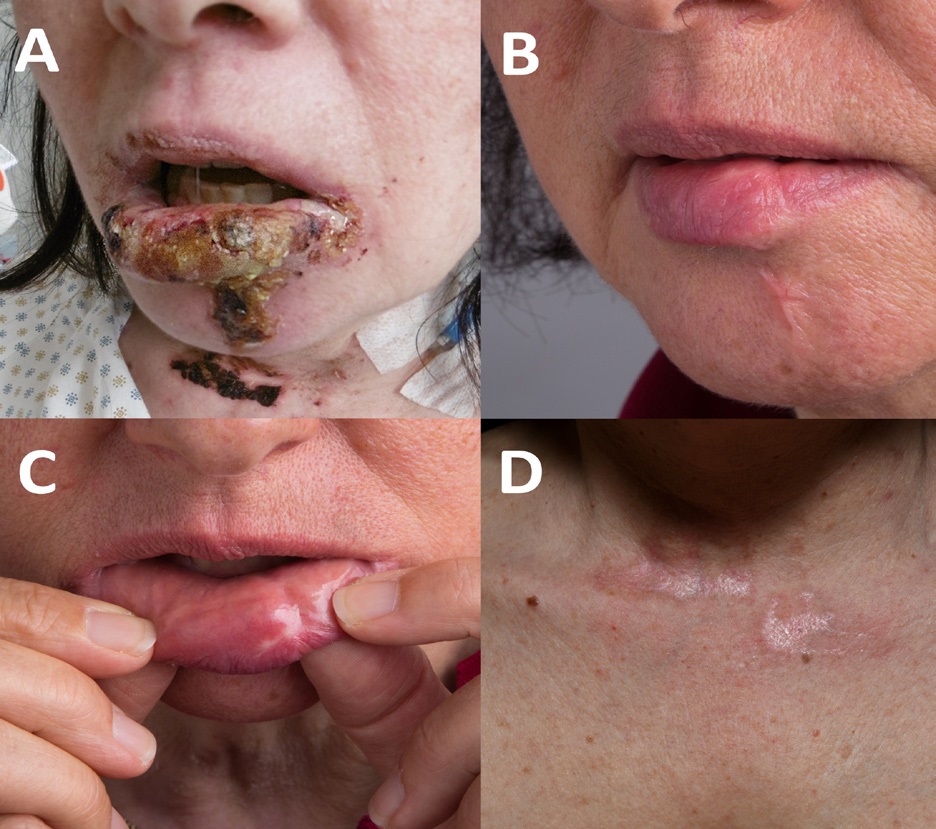
Journal of Clinical Images and Medical Case Reports
ISSN 2766-7820
Case Report - Open Access, Volume 2
Severe herpes-simplex-virus-1-reactivation during severe SARS-CoV-2 infection
Johannes Kalbhenn1*; Barbara Zieger1; Federica Casetti1
1Department of Anaesthesiology and Critical Care, Medical Center, University of Freiburg, Faculty of Medicine, University of Freiburg, Germany
2 Department of Pediatrics and Adolescent Medicine, Medical Center, University of Freiburg, Faculty of Medicine, University of Freiburg, Germany
3 Department of Dermatology and Venereology, Medical Center, University of Freiburg, Faculty of Medicine, University of Freiburg, Germany.
*Corresponding Author : Johannes Kalbhenn
Department of Anaesthesiology and Critical Care,
Medical Center, University of Freiburg, Faculty of
Medicine, Hugstetter Strasse 55, 79106 Freiburg,
University of Freiburg, Germany
Email: Johannes.kalbhenn@uniklinik-freiburg.de
Received : Mar 23, 2021
Accepted : Apr 21, 2021
Published : Apr 23, 2021
Archived : www.jcimcr.org
Copyright : © Kalbhenn J (2021).
Citation: Kalbhenn J, Zieger B, Casetti F. Severe herpes-simplex-virus-1-reactivation during severe SARS-CoV-2 infection. J Clin Images Med Case Rep. 2021; 2(2): 1067.
Introduction
We present the case of a 59-year-old female patient with severe Coronavirus Acute Respiratory Distress Syndrome (CARDS) admitted to Intensive Care Unit (ICU). Prior to the SARS-CoV-2 infection she had no other medical problems besides chronic arterial hypertension. Endotracheal intubation became necessary. Between five episodes of therapeutic prone positioning during the mechanical ventilation, swelling of the lower lip was observed. Local pressure ulcer caused by the endotracheal tube and lip edema were suspected and treated with dexpanthenol ointment. Sweeling increased and a cluster of inflamed vesicles appeared on the lower lip, rapidly affecting the whole labial region, chin and décolleté. These efflorescences were transforming into an enlarging haemorrhagic and necrotic crust, which secondarily impetiginized on the lower lip (Figure 1A). A smear test proved Herpes Simplex Virus type 1 (HSV-1) DNA. Serum HSV-IgG-antibody testing indicated a chronic infection and isolation of active virus revealed HSV-reactivation. Systemic acyclovir therapy (200 mg five times daily) was started and continued in a reduced dose for 108 days. Pharmacotherapy was stopped after negative PCR results. The patient already reported diffuse hair loss as a typical side effect of acyclovir. Topical antiseptic octenidine treatment and local care with lip balm and dexpanthenol ointment supported healing (Figure 1B) resulting in inner cleft of the labial mucosa (Figure 1C) and residual scars (décolleté: Figure 1D).
Authors' contributions
JK: pictures taken, writing of the manuscript, designed figure, literature research.
BZ: literature research, writing und revision of manuscript.
FC: pictures taken, literature research, writing und revision
of manuscript.
References
- McMahon DE, Gallman AE, Hruza GJ, Rosenbach M, Lipoff JB, Desai SR, et al. Long COVID in the skin. A registry analysis of COVID-19 dermatological duration. Lancet Infect Dis. 2021.
- Downing C, Mendoza N, Sra KTS. Human herpesviruses. Dermatology 4th edition ed: Elsevier. 2018.
- Textoris J, Mallet F. Immunosuppression and herpes viral reactivation in intensive care unit patients. One size does not fit all. Critical care. 2017; 21: 230.
- Crimi S, Fiorillo L, Bianchi A, D'Amico C, Amoroso G, Gorassini F, et al. Herpes Virus, Oral Clinical Signs and QoL. Systematic Review of Recent Data. Viruses. 2019; 11.

